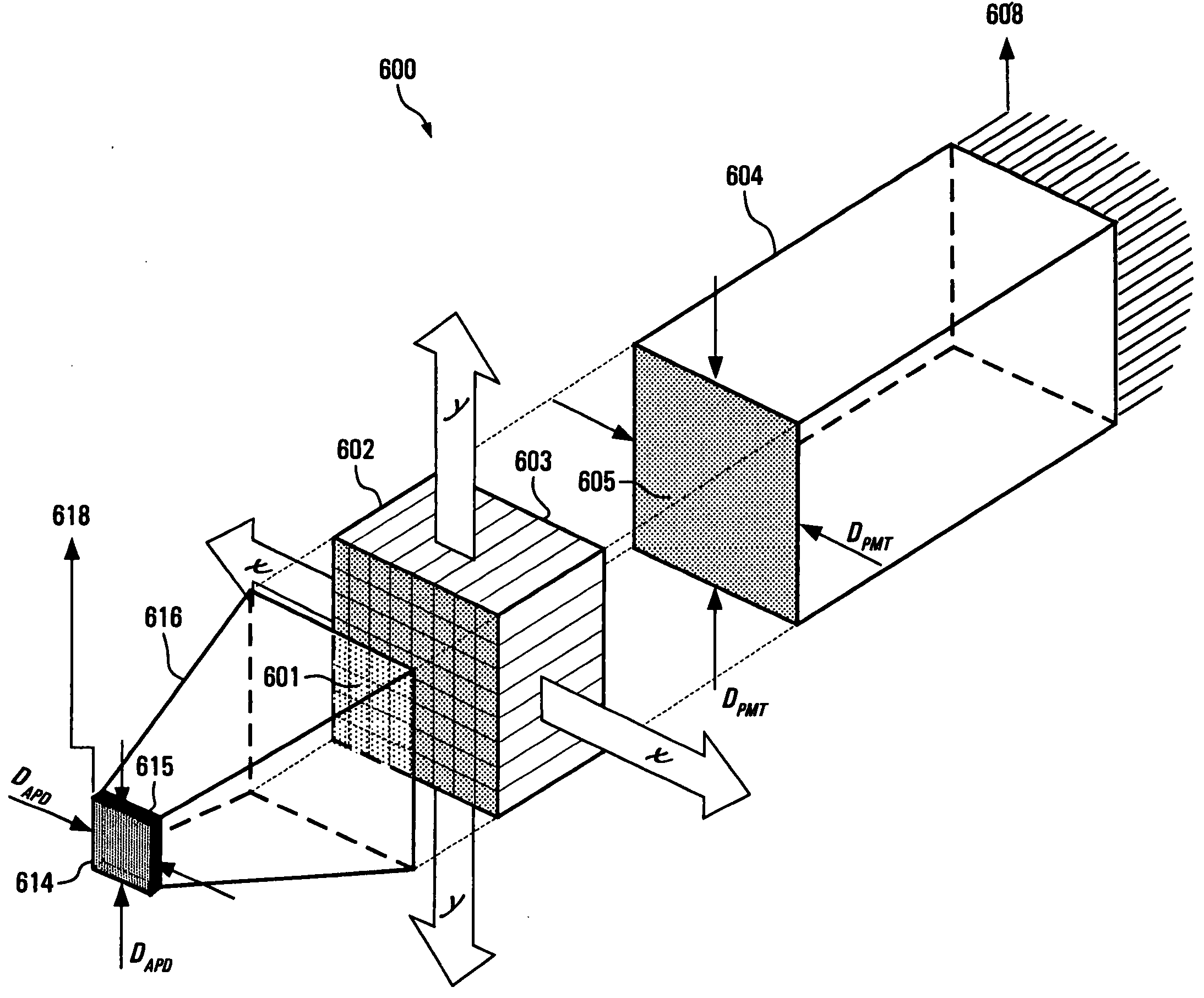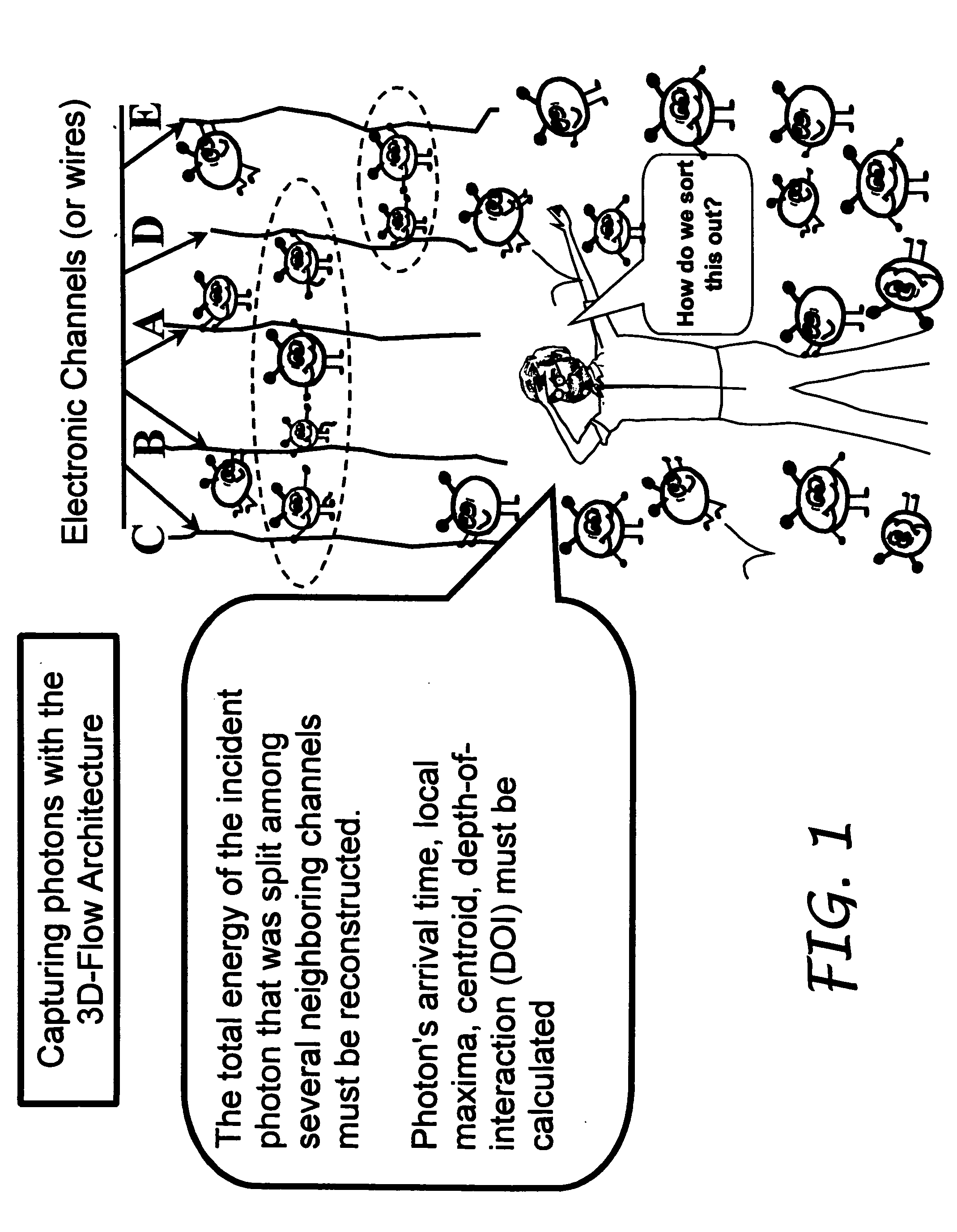Method and apparatus for determining depth of interactions in a detector for three-dimensional complete body screening
a detector and complete body technology, applied in the field of methods, can solve problems such as sticking differences between disciplines, and achieve the effect of efficient and cost-effective, clear and accurate imaging
- Summary
- Abstract
- Description
- Claims
- Application Information
AI Technical Summary
Benefits of technology
Problems solved by technology
Method used
Image
Examples
Embodiment Construction
The present invention relates to improvements in processing data acquired from sensors coupled to detectors, enabling the alteration of altering detector placement, detector array spacing and detector field of view for increasing the capture rates of photons, and thereby increasing efficiencies of traditional Positron Emission Tomography (PET) devices on a photons per unit of radiation basis. It is a method and apparatus consisting of: a) A detector of photons covering a large surface of a human body (field of view —FOV); b) A particular detector assembly that best couples and transfers to the transducer and electronics the information generated by the interaction of a photon with the detector. c) An electronics with the capability to process most information arriving from the detector without the limitation of saturation or processing dead-time for any given radiation to the patient.
The electronics can acquire data faster than the decay time of any specific detector (e.g. cry...
PUM
 Login to View More
Login to View More Abstract
Description
Claims
Application Information
 Login to View More
Login to View More - R&D
- Intellectual Property
- Life Sciences
- Materials
- Tech Scout
- Unparalleled Data Quality
- Higher Quality Content
- 60% Fewer Hallucinations
Browse by: Latest US Patents, China's latest patents, Technical Efficacy Thesaurus, Application Domain, Technology Topic, Popular Technical Reports.
© 2025 PatSnap. All rights reserved.Legal|Privacy policy|Modern Slavery Act Transparency Statement|Sitemap|About US| Contact US: help@patsnap.com



